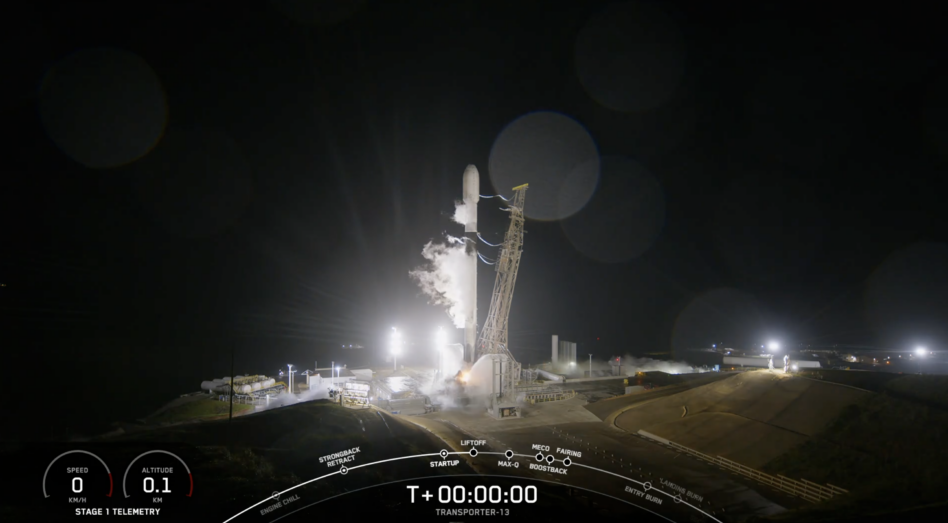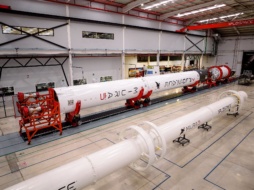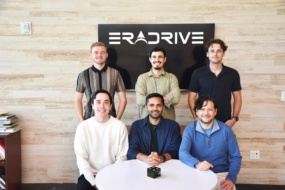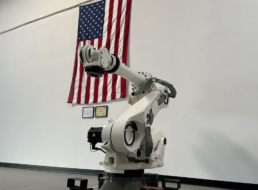Transporter-13 lifted off from Vandenberg Space Force Base on Saturday with customer payloads on board—including a handful of first-time flyers—designed to accomplish a range of missions from keeping an eye on Earth’s weather to boosting national security assets in orbit.
SpaceX’s rideshare missions are always big days for the space industry, with smaller companies using the flights as an opportunity to make their debut or build out their capabilities at a fraction of the price of a dedicated launch. Here’s our list highlighting what was on board:
Eyes in the skies: Transporter-13 included a number of payloads looking to improve real-time monitoring of both Earth and space:
- LizzieSat-3, Sidus Space’s third satellite to launch in 12 months, will boost the company’s imaging capacity for maritime, environmental, and disaster response.
- Clarity-1, the first sat for Albedo, will offer 10-cm resolution VLEO imagery for everything from gas pipeline monitoring to defense and intelligence.
- Muon Space’s FireSat protoflight platform will boost wildfire detection, monitoring and response.
- NASA’s Electrojet Zeeman Imaging Explorer (EZIE) mission will use a trio of satellites to boost the accuracy of space weather forecasts.
Strengthening security: Satellites specifically designed to enhance space-based intelligence and global security also flew aboard Transporter-13:
- Kongsberg Defence’s ARVAKER I, the first of three microsats that will be launched by NanoAvionics in Norway, will begin tracking illegal fishing, smuggling, and environmental crimes while assisting search and rescue missions.
- Turion Space’s DROID.002 is testing iodine-fueled electric propulsion, which could enable more maneuverable satellites for defense applications.
International launches & debuts: Exolaunch is a Transporter mission veteran, having been involved in each one since SpaceX’s inception of the rideshare program. This time, the launch services firm deployed 27 satellites from 14 countries, including:
- Startical’s IOD-1 16U satellite, from Spain
- HEX20’s 3U HILA maiden satellite, from India
- Two U-Space 12U cubesats, SOAP and PANDORE, from France
Exolaunch also debuted its Quadro four-point separation system on this mission. Designed to provide more precise, synchronized satellite releases, Quadro should enhance deployment flexibility and ensure more stable orbits.
Best of the rest: The flight also featured a whole bunch of other payloads worth highlighting, including:
- Liftero’s RED5 green chemical propulsion system that aims to make satellite mobility more affordable and scalable
- Arkadia Space’s hydrogen peroxide based propulsion system, flying as a hosted payload aboard a D-Orbit ION satellite
- Aerospace Corporation’s AeroCube-18, which will test hyperspectral imaging, nanotech payloads, and advanced solar cells over a five-year mission
- Endurosat and Botswana International University of Science and Technology’s Botsat-1, Botswana’s first satellite in space, carrying a hyperspectral sensor for mining and agriculture monitoring
- Spire’s LEMUR-2 “Sentinel” CubeSat, which will provide low-light imagery and ensure security for space assets
Correction: This story has been updated to reflect that two spacecraft—York Space Systems’ PExt and MyRadar’s HORIS—moved to later ride share flights.




